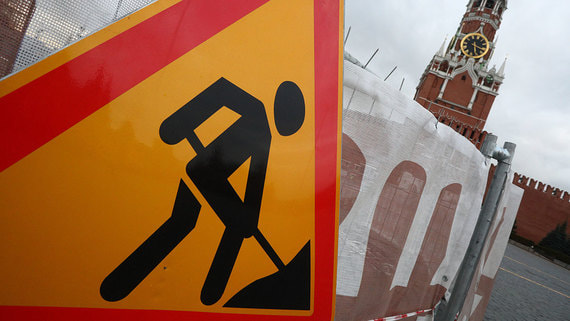Investments in PPP projects in Russia reached a maximum in five years
[ad_1]

The volume of investments in projects based on public-private partnership (PPP) in Russia, which passed the commercial closure before the end of 2022, amounted to 765 billion rubles. This is stated in ACRA’s study on the PPP market under external pressure, which Vedomosti got acquainted with. This is the maximum amount of investments for such projects since 2018, the document notes.
Investments in PPP projects in 2021 were 32% lower – they amounted to 523 billion rubles, follows from ACRA calculations based on data from the Rosinfra platform. But the share of private money in them was significantly higher – 82%, or 429 billion rubles, against 64%, or 486 billion rubles, in 2022.
The growth of investments in 2022 is associated with an increase in public investment in infrastructure, the authors of the study confirm. “Federal spending on infrastructure projects in 2022 increased by almost 35% yoy, and the volume of construction work carried out last year in Russian regions increased by 5% compared to 2021,” the document says.
Such dynamics emphasizes the urgency of the task of expanding the forms of attracting private investment in infrastructure projects, the authors of the study note. According to ACRA, this would contribute to the development of both infrastructure and the stock market in Russia.
In total, 336 PPP contracts were concluded last year, in most cases concessions. This is a maximum for three years and 22% more than in 2021, follows from the document.
The largest projects, the commercial closure of which took place in 2022, were the construction of the Alekseevskoye – Almetyevsk highway as part of the Shali – Bavly toll road in Tatarstan (83.7 billion rubles), the project of an oncological center in Perm (17.7 billion rubles) , a project for a universal sports complex with artificial ice in Nizhny Novgorod (16.1 billion rubles), a project for the construction of a cold water supply system in Blagoveshchensk (12.6 billion rubles) and an urban electric transport project in Kursk (12.4 billion rubles) , Alfiya Vasilyeva, deputy director of the structured and project financing rating group of ACRA, listed Vedomosti.
The analytical agency points to high risks of increasing the cost of already launched projects. “At least half of the facilities that are scheduled to be commissioned by the end of 2025 may materialize the risk of exceeding capital costs, when the actual construction costs exceed the planned ones by 20–40%,” ACRA fears. The problem could be solved by using long-term money to refinance high-quality projects with a high credit rating, the researchers believe.
It is not possible to make an accurate forecast of the number and volume of new transactions for 2023, Vasilyeva states. ACRA believes that in 2023 the situation in the industry will remain difficult due to a shortage of personnel, equipment and spare parts, interruptions in the supply of materials and inflation. This will require the extension of anti-crisis measures, and the trend towards the leading role of the state and state-owned companies in the PPP market will continue, which is an adequate response to the challenges of the time, the study notes.
A significant role in stabilizing the market and increasing the number of projects in 2022 was played by financial and regulatory measures of state support, says a representative of the National PPP Center. In particular, we are talking about programs and instruments launched in the last two years – the so-called demographic subsidy for the construction of schools, programs for the creation of interuniversity campuses and the development of urban electric transport, the Business Sprint federal project, infrastructure bonds, instruments of the Russian Environmental Operator and others
“They provided a budget leverage to the regions, which made it possible to launch many projects, including in the social sphere, and provide guarantees of stability to investors,” explains Vedomosti’s interlocutor.
In addition, the government has launched a number of measures aimed at reducing risks for project participants, he recalls. In particular, from March to July 2022, the possibilities for changing the essential terms of concessions and PPP agreements were expanded. Also, until the end of 2022, it was possible to conclude concessions without a tender if the subject of the Russian Federation acted as the concessor, and the rights to the land plot were transferred to the potential concessionaire before July 1, 2022. But this rule did not apply to utility and transport projects.
The result of 2022 is caused by a combination of circumstances, in particular, the ability to conclude many contracts without a tender, and state support programs in some areas, agrees Sherpa Group CEO Alexandra Galaktionova.
The largest area in terms of investment in 2022 has traditionally become the transport sector, the National PPP Center notes. A third of the total investment fell on the social sector, where various support programs are being implemented. Among the largest contracts of last year, in addition to those mentioned above, the interlocutor names the concession for the design and construction of the Omsk toll bypass for 63.25 billion rubles. and a concession for electric transport in Nizhny Novgorod for 50.35 billion rubles.
According to the PPP center, under a positive scenario, about 400 projects may undergo commercial closure in 2023, while under a pessimistic scenario, a reduction of 20–30% can be expected.
[ad_2]
Source link





